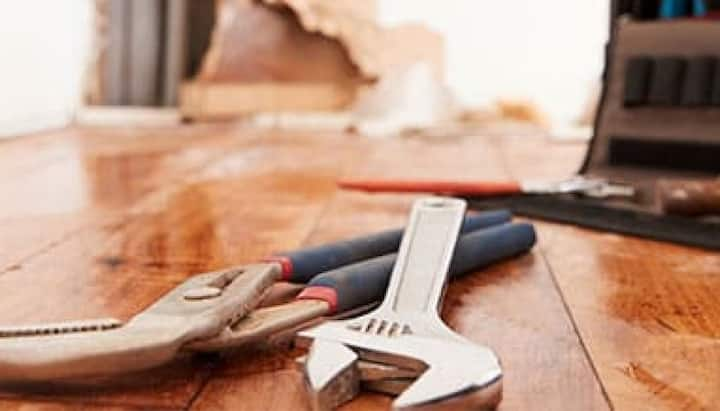
Top Water Damage Prevention Tips
Water damage can be one of the most costly and devastating events in a home. It is critical to take proactive steps to prevent this from happening. Water damage prevention begins with identifying and addressing potential sources. Common causes include leaky pipes, overflowing sinks, and faulty appliances. Regular maintenance on these items is essential for keeping them in working order and avoiding costly repairs down the line. Additionally, installing protective measures such as sump pumps or backflow valves can protect against seepage or flooding. Finally, homeowners should also be aware of environmental factors that can contribute to water damage, such as excessive rain or snowfall. Regularly checking roof gutters and downspouts for blockages or debris can help ensure excess water is directed away from the house. By taking these proactive steps, you can minimize the chances of costly water damage in the future.
Water damage prevention begins with understanding the causes
It is imperative to understand the causes of water damage to take preventative measures and avoid costly repairs. Water damage is often caused by flooding from heavy rains or storms. Flooding occurs when rivers become overwhelmed with water due to excessive rainfall or snow melt. Floodwaters can enter homes through windows, doors, and other openings, damaging furniture, appliances, and belongings inside the building. Leaking pipes are another common cause of water damage. Pipes that are not properly sealed or joined together may leak water over time. Faulty appliances such as washing machines and dishwashers can also cause leaks that lead to water damage if not replaced promptly. By understanding the potential sources of water damage and taking steps to protect your property against them, you will ensure that your home or business remains safe from harm.
Perform home inspections to identify potential issues
Irony abounds when one considers that the most effective way to practice water damage prevention in the home is to proactively inspect it for potential issues. Home inspections are essential to maintaining a safe, healthy and comfortable living environment. A thorough inspection by a qualified professional can identify problem areas such as plumbing leaks or worn roofing materials before significant damage occurs. Inspectors should look for anything that could lead to water entering the home. This includes a clogged gutter system, loose or missing shingles, improperly sealed windows and doors, and signs of mold or rot. If these issues are identified quickly they can often be resolved with minimal effort and expense. Taking these proactive steps can help ensure that a home stays safe and dry while protecting its value over time.
Maintenance and repairs for protection
Regular maintenance and repairs prevent water damage. To maintain a secure and dry home, it is crucial to inspect the roof, gutters, exterior walls, windows, and doors for any potential damage. Any cracks or holes in these areas should be filled immediately to prevent rainwater from entering the home. Additionally, it is essential to check all plumbing fixtures regularly for signs of wear and tear or leaks. If any problems are spotted, they must be addressed as soon as possible; otherwise, they may lead to more serious issues in the future. To further protect themselves against water damage, homeowners should ensure that their sump pumps function properly. By doing this, homeowners can ensure basements remain free from flooding even during severe weather conditions. Taking the proper water damage prevention steps now can save time and money later while keeping one’s family safe from potential hazards associated with flooding or structural damage caused by water accumulation.
Water damage prevention means emergency preparedness
An emergency response plan should be tailored to the potential risks and needs of a given environment. It should include specific steps to take in the event of a water-related emergency, such as flooding or plumbing failure. The plan should also include contact information for local emergency services, as well as any relevant insurance information. The key components of an effective emergency response plan are communication and preparedness. In order to respond quickly and effectively in an emergency, all building occupants must be informed about the plan and their roles in it. Furthermore, regular drills should be conducted so that everyone knows their responsibilities in an emergency situation.
Insurance coverage for protection
Water damage insurance is essential for homeowners, as it provides security and peace of mind. It is like having an insurance policy against water’s unpredictable nature and its potential to cause costly damage. Taking out a comprehensive insurance policy to cover possible water damage can be a wise investment for homeowners who want to protect their belongings and property. When selecting an insurance policy, make sure it covers all the potential risks associated with water such as flooding, burst pipes, and overflowing toilets. A comprehensive policy should also cover replacement costs of water-damaged items. Additionally, it should include coverage for repairs if the damage was extensive or structural in nature. Having an insurance policy in place can ease the financial burden of unexpected water damage.
Consider Dane County Restoration Professionals for water damage prevention services
Water damage can be devastating, resulting in costly repairs and potential health risks. Property owners must take proactive steps to prevent water damage. Home inspections, maintenance and repairs, emergency response plans, and insurance coverage are all key components of a comprehensive prevention program. Taking these steps will reduce the risk of expensive repair bills due to water damage. They will also provide peace of mind knowing the property is protected from unexpected disasters. Consider Dane County Restoration Professionals for your water damage prevention and water damage repair needs!